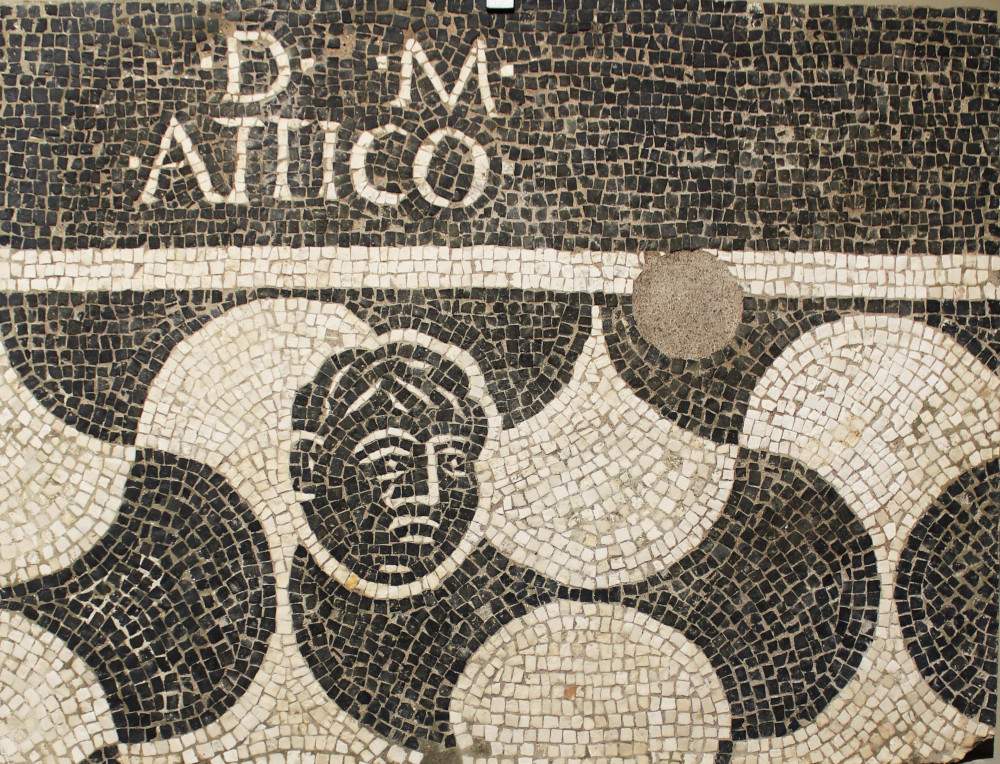From March 14 to June 25, 2023, the third phase of the exhibition Colori dei Romani is being held at Centrale Montemartini. Mosaics from the Capitoline Collections, curated by Claudio Parisi Presicce, Nadia Agnoli and Serena Guglielmi and promoted by Roma Culture, Sovrintendenza Capitolina ai Beni Culturali. It will then be possible to admire sixteen more newly restored works that have never been exhibited before.
Since its inauguration in April 2021, the exhibition project Colors of the Romans has developed in relation to the constant and uninterrupted conservation activity of the mosaic works of the Capitoline Collections and, in particular, of the great heritage preserved in the collection of the Municipal Antiquarium. Hence the idea of a “renewable” exhibition to be implemented from time to time with the restored works, which find in the exhibition the occasion of their enhancement, increasing the offer to the visitor and allowing to deepen the addressed theme.
With this last group of works, the exhibition’s narrative extends its chronological span to the Late Antique period and presents types of artifacts hitherto absent from the exhibition itinerary: large marble tesserae mosaics and opus sectile, collected in a new section of the exhibition The Colors of Marble.
An expression of luxury since the early imperial age, the use of colored marbles became increasingly established during the empire’s peak years, becoming customary in the private sphere and in public, civil and sacred architecture. In third- and fourth-century AD Rome, the wide availability of colored marbles and the scraps from large construction sites were used for a variety of purposes, including the making of mosaic tiles. It was during this period that a special category of large-tile floor mosaics was born, made from particularly precious materials, such as porphyry, serpentine, portasanta, and antique yellow.
Belonging to this category are the mosaics on display from the Baths of Diocletian: fragments of tessellated with a rare combination of marble and porphyry found during excavations in 1873.
The fine specimens of opus sectile on display in the exhibition represent both the earliest phase of production and the later one to which sectilia pavimenta with a square or square-reticular module, with simple and complex motifs, often characterized by the predominant use of reused elements, but always with an impressive overall result, belong. This production has its driving force in the Urbe, and one of the earliest examples of this type of pavement is that of the Diocletian Curia in the Roman Forum, dated to the end of the third century CE. The largest number of examples, however, come from the wealthy aristocratic residences of the fourth century, often inhabited by senators or high-ranking officials eager to flaunt their status.
A large mosaic with plant and bird motifs from a tomb in the necropolis of the Via Portuense, which came to light in 1926 during the construction of the first section of the new Gianicolense ring road near Trastevere station, has also been placed within the exhibition. In the display, the mosaic is presented together with the funerary inscriptions of the deceased, important epigraphic evidence that gives us information about the owners of these tombs, some of whom were of foreign origin.
For info: www.centralemontemartini.org
Hours: Tuesday through Sunday from 9 a.m. to 7 p.m.; closed May 1; admission is allowed until half an hour before closing time.
Image: B/w figured mosaic fragment: scale motif with a face inserted and inscription D M ATTIC, 2nd century-early 3rd century AD.
 |
| Mosaics from Capitoline collections never before exhibited at Centrale Montemartini on display |
Warning: the translation into English of the original Italian article was created using automatic tools. We undertake to review all articles, but we do not guarantee the total absence of inaccuracies in the translation due to the program. You can find the original by clicking on the ITA button. If you find any mistake,please contact us.